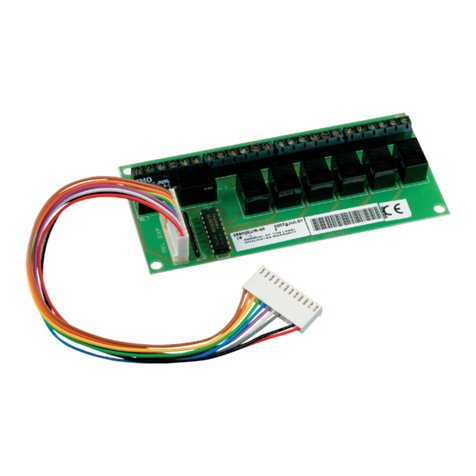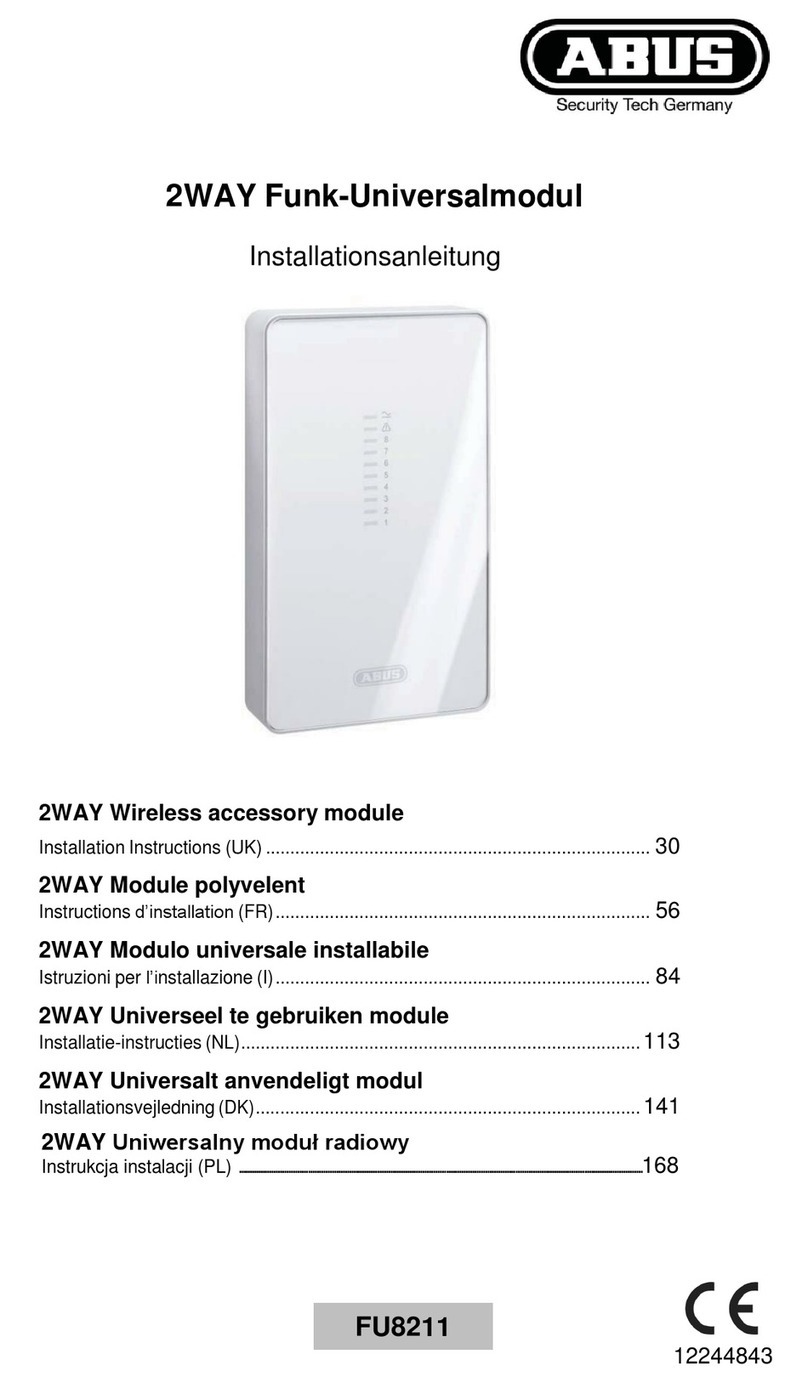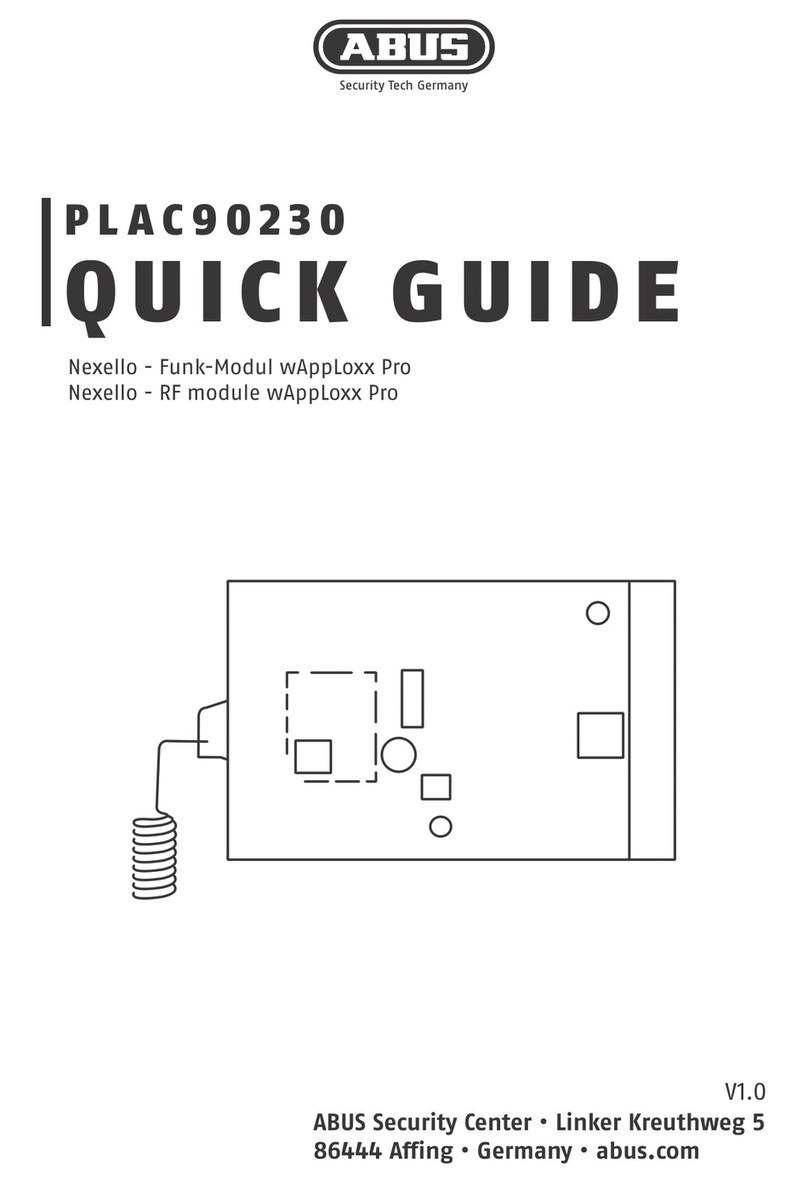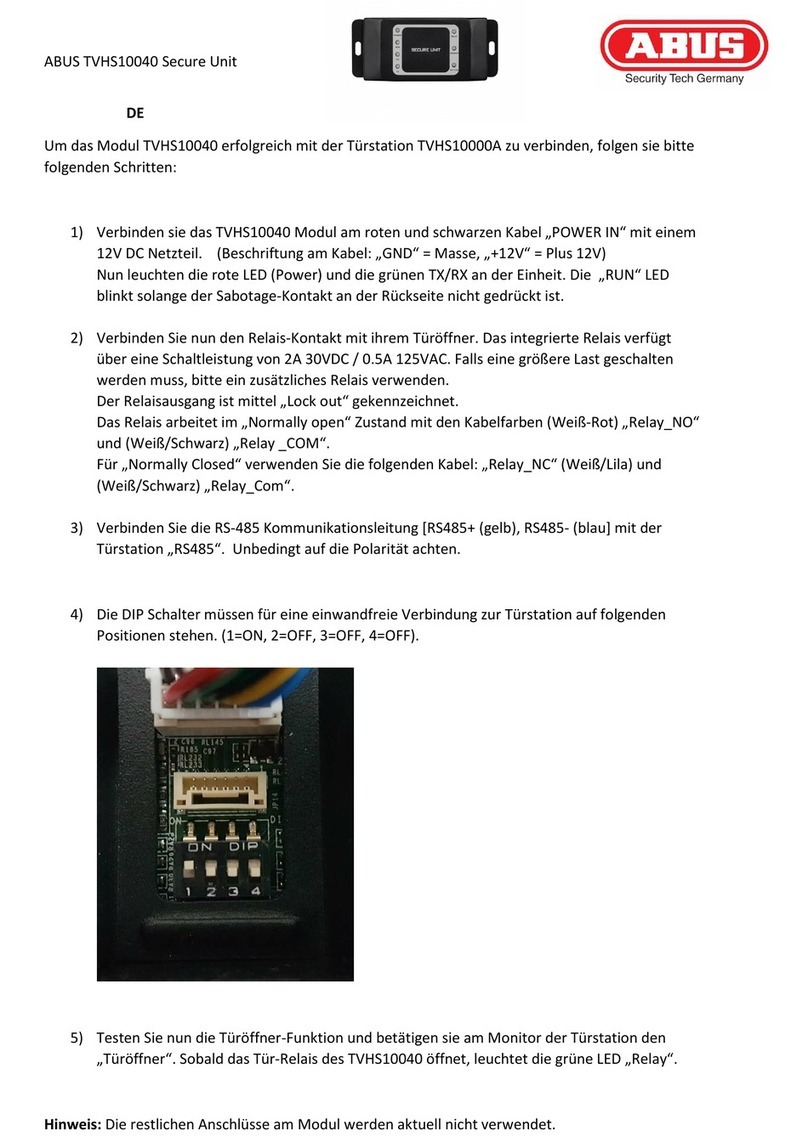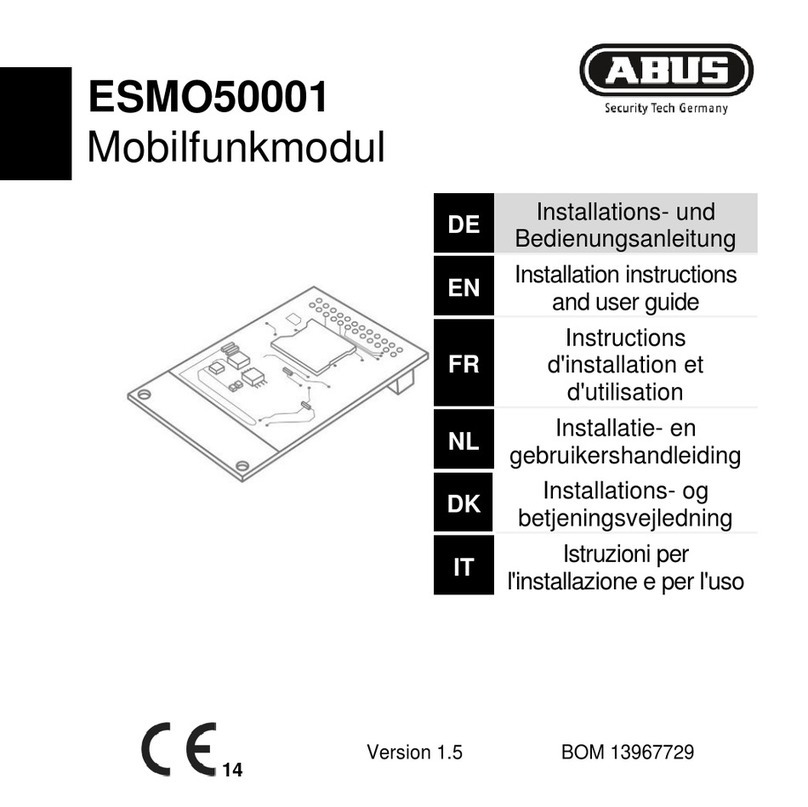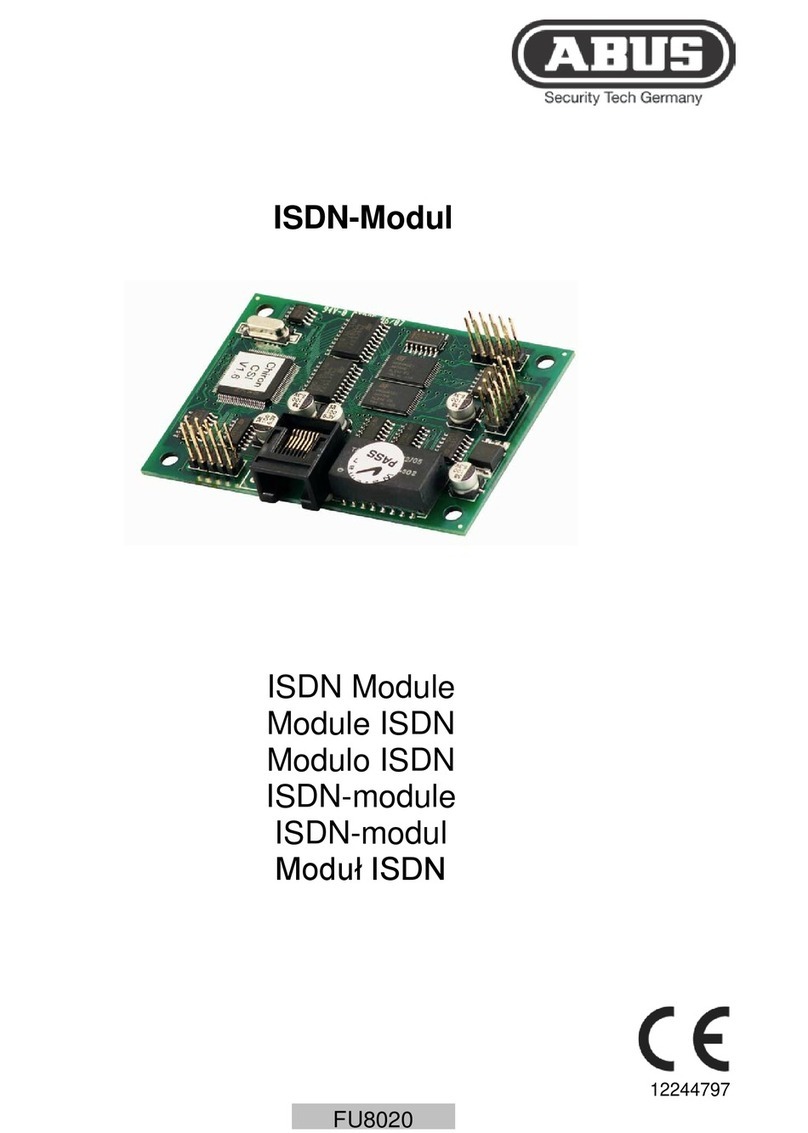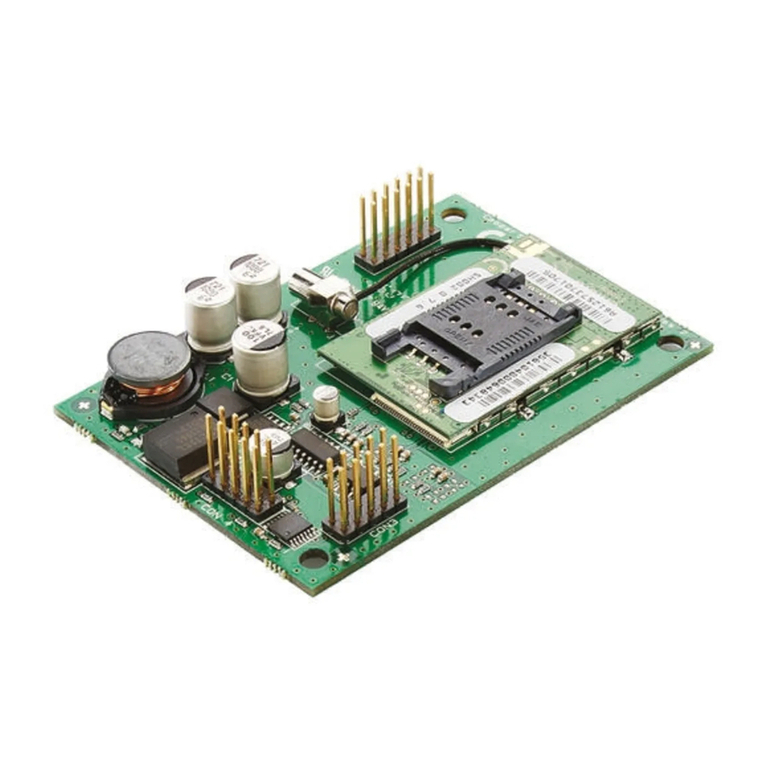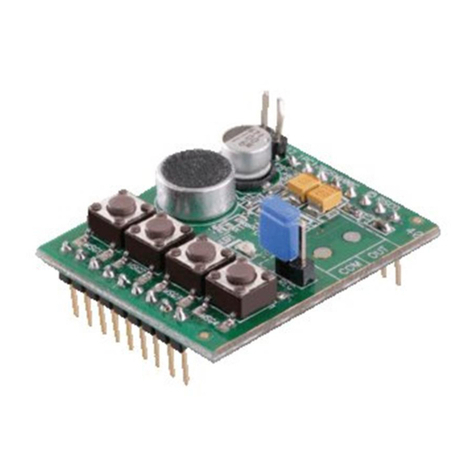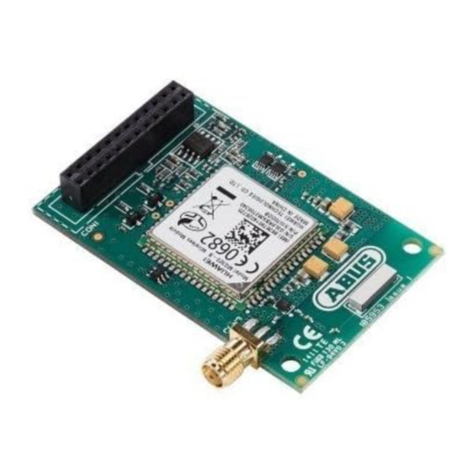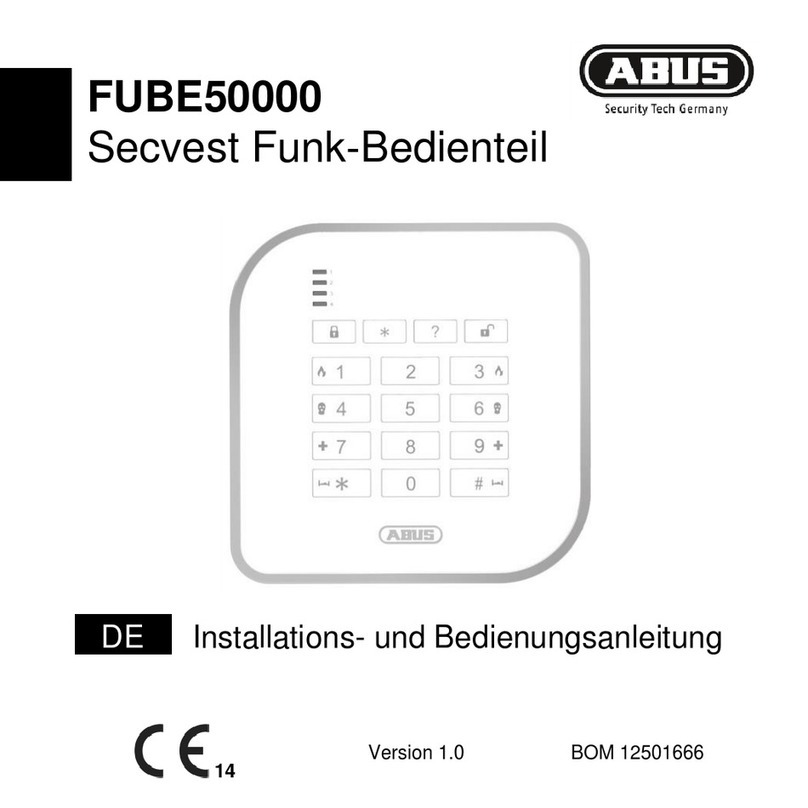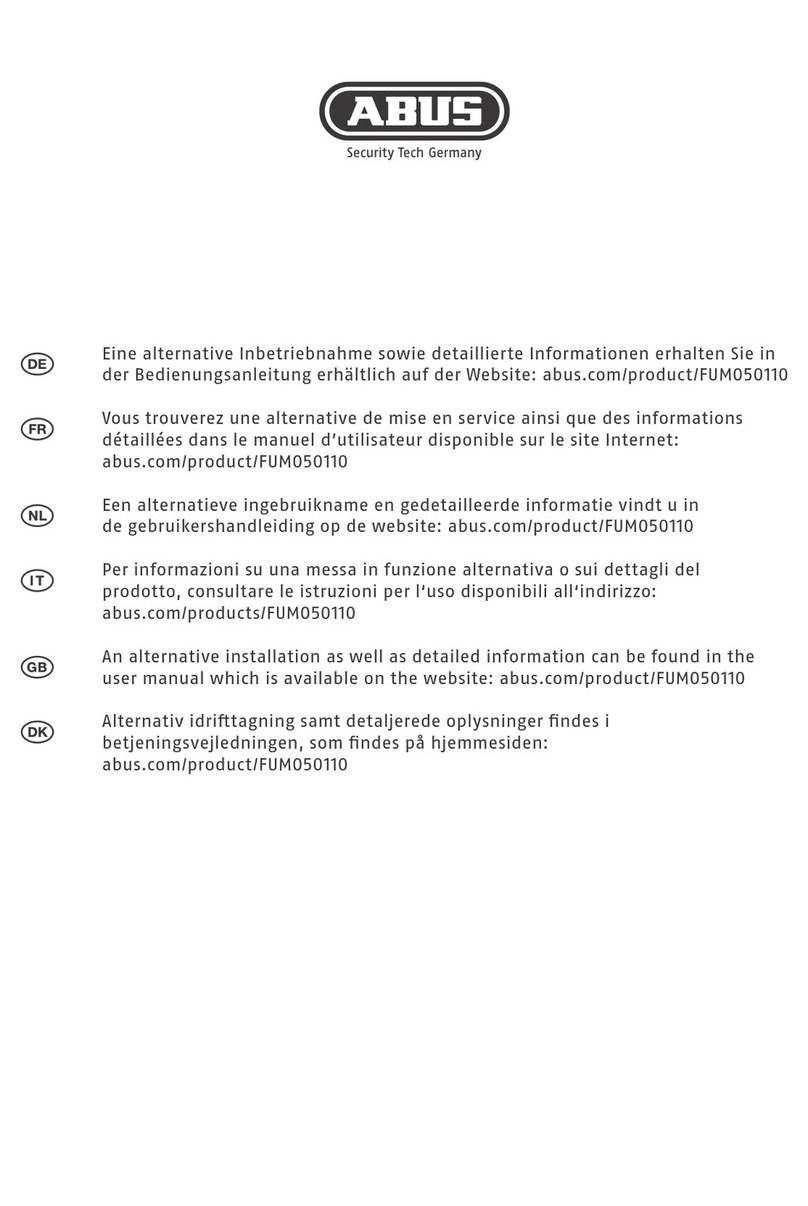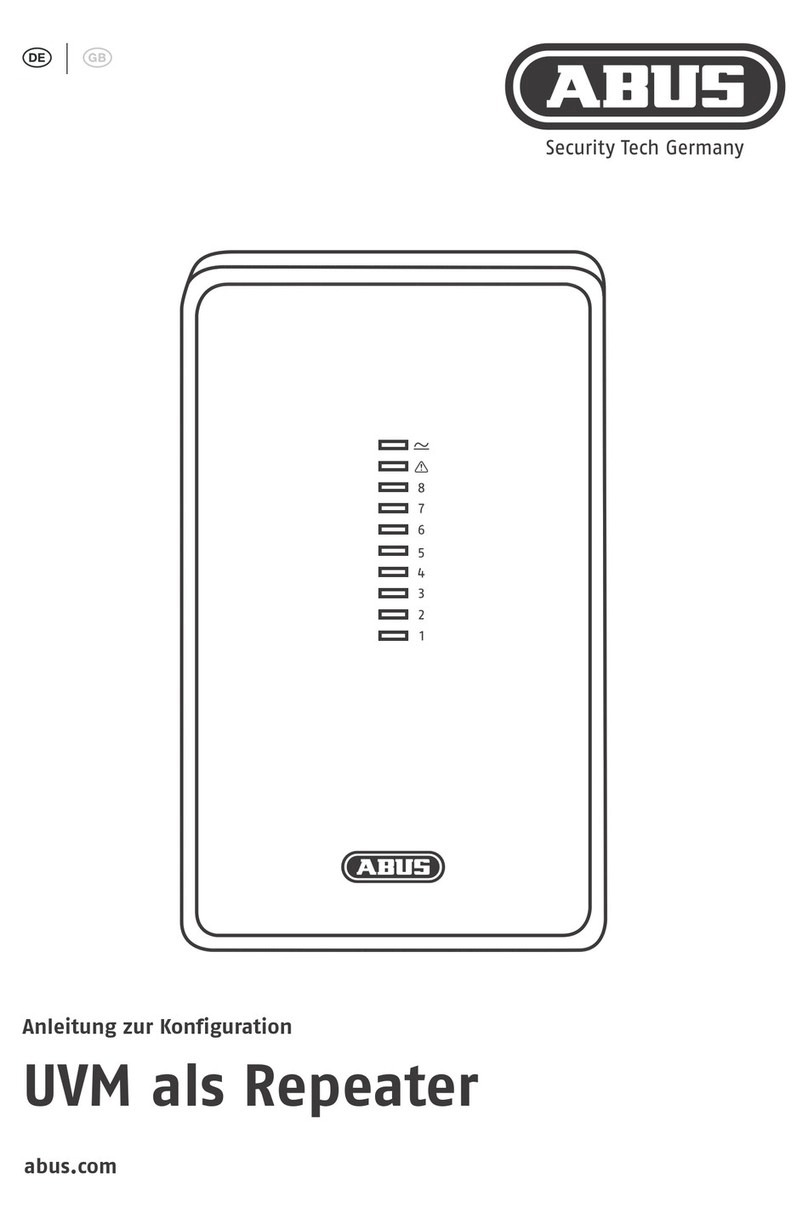
2
Inauguration
Dear customer, dear customer,
we are pleased that you have chosen our product and thank you for your confidence! You made a good
choice.
This relay module (hereinafter referred to as the "device") has been developed and manufactured with
the utmost care. Please read these operating instructions completely and observe all operating and
safety instructions to ensure the best possible handling of the device. This document is intended as an
installation and maintenance manual.
If you have any questions, please contact your specialist trade partner
or contact our customer service:
Mail: ABUS Support, Linker Kreuthweg 5, 86444 Affing, Germany
E-mail: support@abus-sc.com
Phone: +49 8207 959 90 888
Hotline opening hours: Mon-Thu: 08 - 17 h; Fri: 08 - 14 h
ABUS Security-Center hereby declares that the enclosed product complies with the following
guidelines concerning the product:
RED Directive 2014/53/EU, EMC Directive 2014/30/EU, Low Voltage Directive 2014/35/EU, RoHS
Directive 2011/65/EU. The full text of the EU Declaration of Conformity is available at the following
Internet address:
www.abus.com/product/PLHA10000
It can also be obtained from the following address:
ABUS Security Center GmbH & Co. KG,
Left Kreuthweg 5, 86444 Affing, GERMANY
All contained company names and product names are trademarks of their respective owners. All rights
reserved.
disclaimer
These operating instructions have been prepared with the utmost care. Should you nevertheless
notice any omissions or inaccuracies, please inform us in writing at the above address.
Your rights are limited to the repair or replacement of this product as delivered. ABUS Security Center
assumes no liability for any special, incidental or consequential damages, including but not limited to
loss of revenue, loss of profits, restrictions on the use of the Software, loss or recovery of data, cost
of replacement equipment, downtime, property damage and claims by third parties, arising out of or
in connection with the use of the Software, or any breach by ABUS Security Center of its obligations
under this Agreement.a. any warranty, contractual, statutory or compensatory damages claims,
notwithstanding any other limited or implied warranties, or if the limited warranty does not apply,
ABUS Security Center's liability shall be limited to the purchase price of the Product.
The contents of this manual are subject to change without notice.
© ABUS Security-Center GmbH & Co. KG, 09/2019
